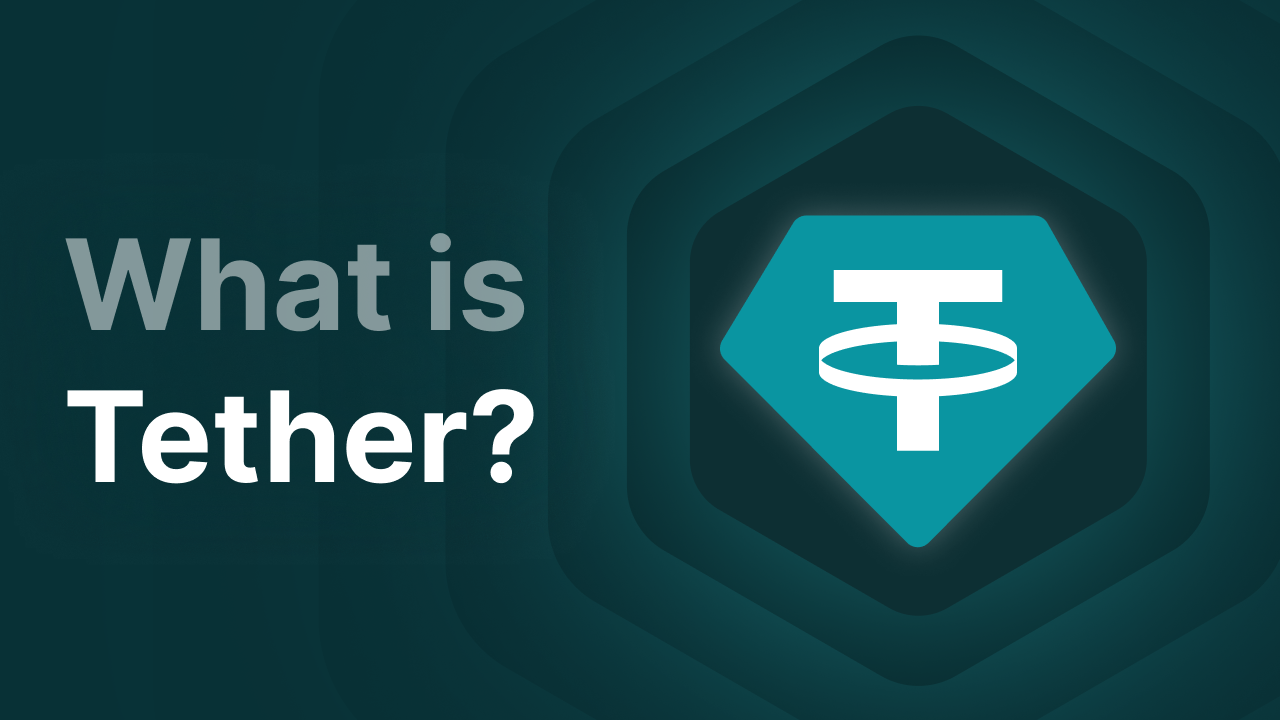What is Tether (USDT)? A Comprehensive Guide

UPDATE (04/06/2025)
Tether’s USDT stablecoin is facing significant regulatory challenges in Europe due to the European Union’s Markets in Crypto-Assets Regulation (MiCA). MiCA mandates that stablecoin issuers obtain appropriate licensing and adhere to stringent transparency and reserve requirements. Consequently, major cryptocurrency platforms have delisted USDT and other non-compliant stablecoins across the European Economic Area. These delistings were implemented in phases, with full removal and automatic conversion of remaining holdings to compliant alternatives completed by March 31, 2025. The regulatory pressures have led to a decline in USDT’s market capitalization within the EU, as investors shift towards MiCA-compliant stablecoins like Circle’s USDC and EURC, which have secured necessary licenses.
Tether (USDT) has emerged as a significant player in the dynamic world of cryptocurrencies, bridging the gap between traditional fiat currencies and digital assets. As one of the most popular stablecoins, Tether has garnered attention for its ability to provide stability amidst the volatility commonly associated with cryptocurrencies. This article delves into what Tether is, how it functions, its advantages and challenges, and its impact on the broader crypto ecosystem.
Key Takeaways
- Tether (USDT) is a type of cryptocurrency known as a stablecoin, designed to maintain a stable value relative to a specific fiat currency, in this case, the U.S. Dollar (USD). Each USDT token is pegged to the value of one USD.
- As one of the most widely used stablecoins, USDT boasts high liquidity across numerous cryptocurrency exchanges. This liquidity ensures that users can easily buy or sell USDT at prevailing market rates, facilitating smooth and efficient trading.
- Under MiCA, Tether must demonstrate compliance through detailed audits and transparent reserve reports to ensure consumer protection and build trust.
What is Tether (USDT)?
Tether (USDT) is a type of cryptocurrency known as a stablecoin, designed to maintain a stable value relative to a specific fiat currency, in this case, the U.S. Dollar (USD). Each USDT token is pegged to the value of one USD, offering a stable alternative to the price fluctuations that characterize most cryptocurrencies like Bitcoin or Ethereum.
Launched in 2014 by the company Tether Limited, USDT was created to facilitate transactions between cryptocurrencies while maintaining a consistent value. This stability makes it an attractive option for traders, investors, and businesses looking to mitigate the risks associated with the inherent volatility of other digital currencies.
How Does Tether (USDT) Work?
The core mechanism that enables Tether to maintain its value is its peg to fiat currencies. Tether Limited claims that each USDT token is backed by an equivalent amount of fiat currency held in reserve. In theory, this means that for every USDT in circulation, there is a corresponding US dollar held in reserve, ensuring that users can exchange their USDT for USD at any time.
Issuance and Redemption
The process of creating and redeeming USDT involves the following steps:
-
Issuance: When users want to buy Tether (USDT), they send USD to Tether Limited. Upon receiving the fiat currency, Tether Limited issues an equivalent amount of USDT, which can then be used for various purposes, such as trading or transferring funds across different cryptocurrency exchanges.
-
Redemption: Conversely, when users wish to redeem their USDT for USD, they send the USDT back to Tether Limited, which then returns the equivalent amount of USD from its reserves.
Blockchain Integration
Tether is built on multiple blockchain platforms, including Bitcoin (via the Omni Layer), Ethereum (as an ERC-20 token), Tron, and others. This multi-chain approach enhances the accessibility and utility of USDT across various blockchain ecosystems, making it easier for users to integrate Tether into different applications and services.
Advantages of Tether (USDT)
Tether offers several benefits that have contributed to its widespread adoption in the cryptocurrency space:
Stability
USDT provides a stable store of value, making it an attractive option for users looking to avoid the price volatility typically associated with cryptocurrencies. This stability allows traders to hold funds in USDT without worrying about sudden price swings, offering a safe haven during turbulent market conditions.
Liquidity
As one of the most widely used stablecoins, USDT boasts high liquidity across numerous cryptocurrency exchanges. This liquidity ensures that users can easily buy or sell USDT at prevailing market rates, facilitating smooth and efficient trading.
Ease of Use
Tether simplifies the process of moving funds between different cryptocurrency exchanges. Traders can use USDT to quickly transfer value without the need to convert back to fiat currencies, reducing transaction times and costs.
Accessibility
USDT is supported on multiple blockchain platforms, providing users with a wide range of options for integrating Tether into their preferred ecosystems. This flexibility enhances the accessibility and utility of USDT for various applications, including decentralized finance (DeFi) and cross-border transactions.
Hedging Against Volatility
Traders often use Tether as a tool to hedge against market volatility. By converting volatile cryptocurrencies into USDT, they can protect their portfolios from sudden price fluctuations, enabling them to re-enter the market at more favorable conditions.
Challenges and Criticisms
Despite its popularity, Tether has faced several challenges and criticisms over the years:
Transparency Concerns
One of the most significant criticisms of Tether is the lack of transparency regarding its reserves. Although Tether Limited claims that each USDT is backed by an equivalent amount of USD, the company has been criticized for not providing regular, comprehensive audits of its reserves. This lack of transparency has led to skepticism about whether Tether is fully backed by fiat currency.
Regulatory Scrutiny
Tether has faced regulatory scrutiny in various jurisdictions due to concerns about its operations and reserve management. In 2021, Tether and its affiliated company, Bitfinex, reached a settlement with the New York Attorney General's office over allegations of misrepresenting the backing of USDT and covering up financial losses. This settlement highlighted the regulatory challenges Tether faces in maintaining compliance with financial regulations.
Centralization
Unlike decentralized cryptocurrencies like Bitcoin, Tether is controlled by a centralized entity, Tether Limited. This centralization raises concerns about the potential for manipulation or mismanagement of the stablecoin, as users must rely on the company’s assurances regarding its reserves and operations.
Dependence on Banking Relationships
Tether’s ability to maintain its peg to the USD depends on its banking relationships, which can be fragile. Any disruptions in these relationships could impact Tether’s ability to process redemptions and maintain its stability, posing risks to users who rely on USDT for stable transactions.
Tether (USDT) and MiCA Regulation in Europe
The European Union’s forthcoming Markets in Crypto-Assets (MiCA) regulation represents a comprehensive framework aimed at providing legal clarity and protecting investors in the crypto-asset market. Expected to be implemented between 2024 and 2025, MiCA will affect Tether (USDT) by classifying it as an “e-money token” due to its peg to the U.S. Dollar. This classification subjects Tether to specific requirements, including maintaining sufficient reserves to back its tokens fully and obtaining authorization and licensing to operate within the EU.
Under MiCA, Tether must demonstrate compliance through detailed audits and transparent reserve reports to ensure consumer protection and build trust. While these requirements pose challenges in terms of compliance costs and regulatory scrutiny, they also present opportunities for Tether to strengthen its credibility and expand its presence in the European market. The uniform regulatory environment could enhance Tether’s attractiveness to institutional investors and increase its role in cross-border transactions and decentralized finance (DeFi) applications within Europe.
Tether’s Impact on the Cryptocurrency Ecosystem
Tether has had a profound impact on the cryptocurrency ecosystem, influencing various aspects of the market:
Trading and Liquidity
USDT has become a staple on most cryptocurrency exchanges, providing traders with a stable asset to use as a base currency for trading pairs. Its widespread adoption has contributed to increased liquidity and efficiency in the cryptocurrency markets, enabling seamless trading and arbitrage opportunities.
Decentralized Finance (DeFi)
The rise of decentralized finance (DeFi) has further increased the demand for stablecoins like USDT. Many DeFi platforms use USDT as a means of collateral, lending, and liquidity provision. Its stability and liquidity make it an ideal choice for DeFi applications, facilitating the growth of this burgeoning sector.
Cross-Border Transactions
Tether’s ability to facilitate cross-border transactions has made it a valuable tool for individuals and businesses looking to transfer value quickly and efficiently. By eliminating the need for traditional banking intermediaries, USDT enables cost-effective international transfers, particularly in regions with limited access to traditional financial services.
Market Stabilization
During periods of extreme market volatility, Tether provides a stabilizing force, allowing traders to quickly exit volatile positions and park their funds in a stable asset. This stability can help mitigate market crashes and provide a temporary safe haven for investors during uncertain times.
The Future of Tether (USDT)
As the cryptocurrency industry continues to evolve, Tether faces both opportunities and challenges. The increasing demand for stablecoins, driven by the growth of DeFi and institutional interest in cryptocurrencies, presents opportunities for Tether to expand its reach and influence.
However, Tether must also address ongoing concerns regarding transparency and regulatory compliance to maintain trust and credibility within the industry. As regulators worldwide pay closer attention to stablecoins, Tether will need to adapt to changing regulatory landscapes and provide greater transparency to reassure users and stakeholders.
Potential Innovations
Tether’s future may also involve exploring innovations such as:
-
Integration with Central Bank Digital Currencies (CBDCs): As central banks explore the development of digital currencies, Tether could potentially collaborate with these initiatives to enhance its offerings and maintain relevance in a changing financial landscape.
-
Expanding Blockchain Support: Tether could continue to expand its presence on additional blockchain platforms, increasing its accessibility and utility for a broader range of applications and users.
-
Enhanced Transparency Measures: Implementing regular audits and providing transparent reports on reserves could bolster confidence in Tether’s operations and address concerns about its backing.
Conclusion
Tether (USDT) has established itself as a cornerstone of the cryptocurrency ecosystem, providing stability and liquidity in an otherwise volatile market. Its widespread adoption, ease of use, and accessibility have made it an essential tool for traders, investors, and businesses seeking a stable digital asset.
While Tether faces challenges related to transparency, regulatory scrutiny, and centralization, its impact on the cryptocurrency landscape is undeniable. As the industry continues to evolve, Tether’s ability to adapt and address these challenges will be crucial in maintaining its position as a leading stablecoin and a vital component of the digital economy.
